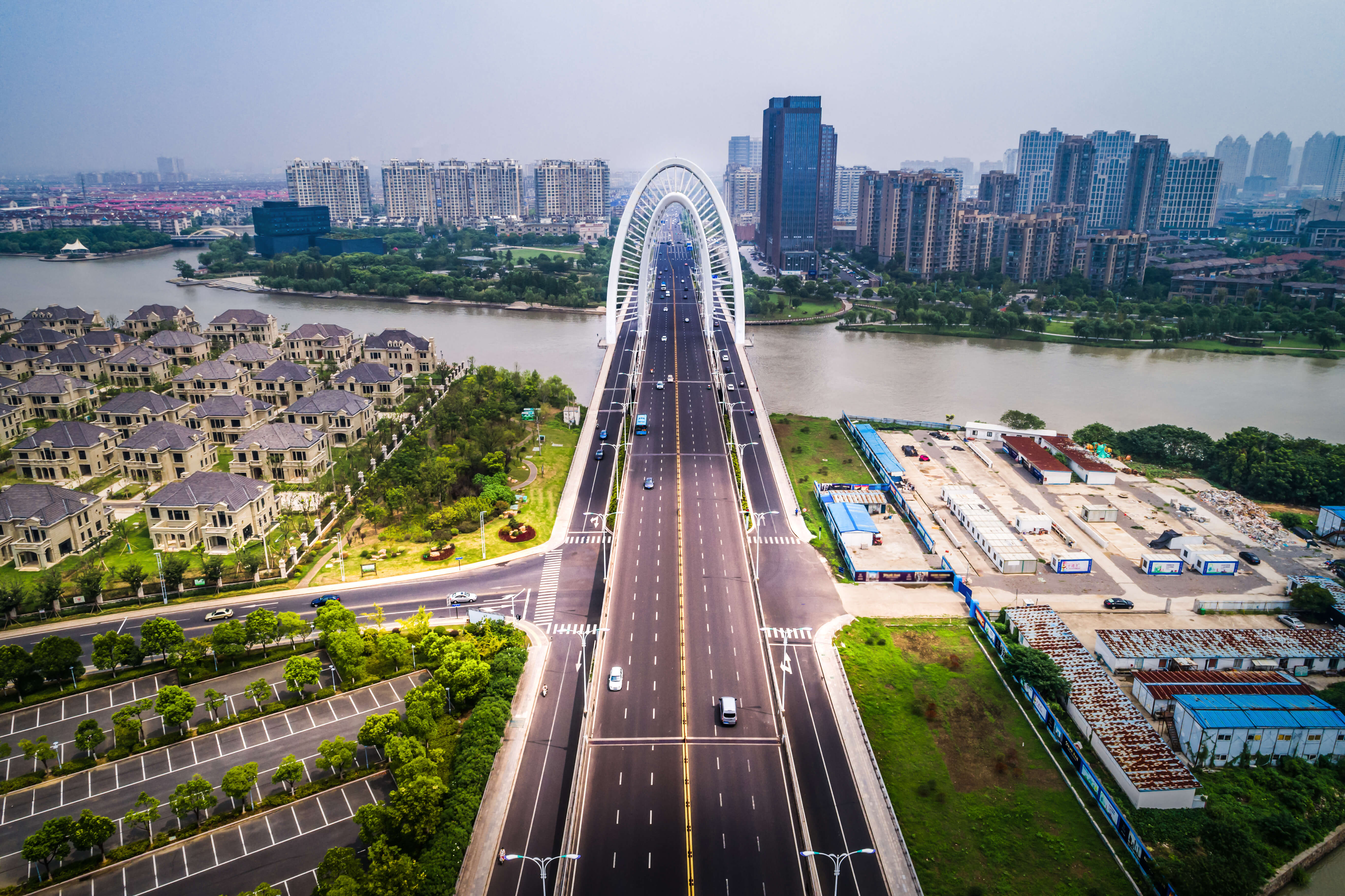Big infrastructure projects shape the destiny of a city as they reduce commute times and help businesses conduct their operations smoothly. So, the projects like highways, metros, waterfronts, and airports not only reduce commute times but also enhance the quality of life in the neighborhoods. The reduced transportation cost and travel time make residential and commercial properties highly desirable in that area.
It also leads to economic growth and job creation increasing the demand for both residential and commercial real estate nearby. We have seen that increased economic activity has led to higher rental yield in cities like New York, Tokyo, London, Singapore, Bangkok, Sydney and Paris.
Better infrastructure acts like a powerful magnet that attracts commercial hubs, malls, schools, hospitals, entertainment centers, and other amenities, which further boost the overall appeal of the areas adjacent to these projects.
About Mumbai Trans Harbour Link MTHL or Atal Setu
Earlier it took two hours from Sewri in South Mumbai to Chirle near Nhava Sheva in Navi Mumbai, but the recently constructed Mumbai trans harbour link MTHL which is also known as the Atal Setu project, The entire journey has been reduced to a mere 20 minute ride.
The Rs. 20,000 crores project which took almost six years to complete shaved off almost 20 kilometers from the traffic ridden roads to make life easier for Mumbaikars.
The project has increased connectivity between South Mumbai and the rapidly growing Navi Mumbai area, increasing economic prospects of both the regions.
Key Features and Strategic Importance
- Length: It has an overall length of 21.8 km running 16.5 km over sea and further 5.5 km on land.
- Connectivity: It links Mumbai with Navi Mumbai, and further integrates with the Mumbai–Pune Expressway and the upcoming Navi Mumbai International Airport (NMIA).
- Economic Impact: Facilitates faster access to Jawaharlal Nehru Port Trust (JNPT), Mumbai Port, and major business corridors, thus enhancing trade and logistics.
- Environmental Considerations: The sealink project is designed with noise barriers and eco-friendly construction practices, earning recognition from the Bombay Natural History Society.
Impact on Mumbai’s Real Estate Market
Surge in Property Prices and Demand
The Atal Setu has increased real estate activity significantly, particularly in Navi Mumbai and its urban nodes such as Panvel, Ulwe, and Kharghar. Data from multiple sources indicate:
- Land price appreciation: Panvel witnessed a 25% jump in plot prices within 15 months of the bridge’s inauguration, rising from ₹6,000–8,000/sq.ft. to ₹8,000–10,000/sq.ft. Ulwe saw a 20–27% increase in the same period.
- Residential property growth: A Knight Frank India report highlighted that residential prices in Navi Mumbai were already growing at 8–10% annually pre-Atal Setu, with an additional 5–7% premium post-inauguration in high-demand areas.
- Commercial land rates: Near Nhava Sheva, commercial land rates surged by 15–20%, driven by logistics and warehousing demand due to proximity to JNPT.
Rental Market Dynamics
Improved connectivity has made Navi Mumbai a more attractive residential hub for Mumbai’s workforce. As they can live in open and less congested areas of Vashi and Koparkhairane and still manage to work and commute to areas in Central & South Mumbai.
As a result:
- Rental demand is escalating, especially in areas with quick access to the bridge, presenting lucrative opportunities for investors and landlords, according to a Times Now survey.
- Increasing amenities and reduced commute times are drawing homebuyers as they can enjoy quality living in affordable areas. It has increased demand manifold.
New Project Launches and Urban Development
The construction of the Atal Setu has triggered a rapid development activity, as developers have announced new launches and premium projects:
- Integrated townships and luxury developments are gaining traction in Panvel, Ulwe, and Kharghar, with projects like Sai Proviso County and Maple Woods capitalizing on enhanced accessibility.
- The bridge’s proximity to the upcoming Navi Mumbai International Airport (NMIA) is a game-changer, with expectations of a sustained real estate boom as the airport becomes operational in 2025.
Market Insights and Trends
- Colliers India estimates that major infrastructure projects like Atal Setu will likely boost land values by 15–25% within 2–3 years in adjacent areas, echoing historical precedents like the Bandra-Worli Sea Link.
- Demand is not uniform: Urban nodes close to the bridge saw the steepest appreciation, while rural pockets beyond Panvel experienced slower growth (5–8%).
- Commercial and logistics sectors are direct beneficiaries of this project. So, logistics firms and e-commerce companies have shown increased interest as they got improved access to the port after the launch of the MTHL. .
Cautions and Considerations
While the overall growth trend is bullish in the real estate sector, some caution is warranted:
- The concerns related to Market volatility and affordability will remain there, as there is a dangling fear that rapid price appreciation could put pressure on end-user affordability. This could lead to speculative bubbles in certain micro-markets.
- Initial daily traffic of 22,689 vehicles on the Atal Setu was below projections, suggesting that the full economic impact of the project is still far away. A daily traffic of 40,000 is expected in near future as usage ramps up and related infrastructure like the Worli-Sewri elevated road and NMIA starts operations in the mid 2025.
Expert Opinions
- Analysts predict a 10–15% rise in average property prices in Navi Mumbai over the next few years, with sustained demand for both residential and commercial assets.
- Industry stakeholders see Atal Setu as a catalyst for long-term growth, with the potential to transform Navi Mumbai into a preferred destination for both home buyers and businesses.
Conclusion
The Atal Setu project is a game changer for the real estate market in Mumbai. It will change the destiny of India’s commercial capital by bridging the gap between downtown Mumbai and Navi Mumbai, the suburban area and beyond. It has opened new corridors of growth, spurred investment, and set the stage for the region’s next phase of urban and economic development. The “Atal Setu effect” is poised to continue shaping property trends, investor sentiment, and the broader urban fabric of Mumbai for years to come.
Looking to invest or buy your dream home in South Mumbai or anywhere else in India? Connect with our expert team for personalized advice and the latest market insights.
- https://en.wikipedia.org/wiki/Mumbai_Trans_Harbour_Link
- https://economictimes.com/news/economy/infrastructure/atal-setu-5-facts-about-indias-longest-sea-bridge-ever-constructed/record-length/slideshow/109948655.cms
- https://www.timesnownews.com/mumbai/how-atal-setu-is-adding-to-the-boom-of-navi-mumbais-real-estate-article-108758600
- https://www.linkedin.com/pulse/atal-setus-25-lesson-alibaug-next-luxury-goldmine-karan-avad-c4hif
- https://timesofindia.indiatimes.com/business/india-business/mumbai-trans-harbour-link-atal-setu-mthl-navi-mumbai-real-estate-property-prices-impact-explained/articleshow/106750237.cms



